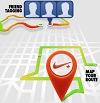
Facebook is touting the success of a number of fitness apps, including Nike, as social networkers go digital to track and map their work out sessions. The site’s developers blog has highlighted four applications that have taken advantage of Facebook’s Open Graph to find success on the social network. With these apps, users can post a map of their run, gain a personal trainer in their pocket, count calories burned and share successes.
More on this Case study …
Brand: Nike | Media: Facebook | Country: US | Sector: Sport | Format: Social media and Mobile

This gets their friends involved, making exercise a much more social activity. The apps also understand when to share content, such as goals reached or a personal best time.
The best practices these early-adopting Open Graph fitness apps are using can be boiled down to:
Use Facebook Login: Fitness apps like Endomondo use Facebook Login as an effective way to drive user sign-up on mobile. For more on getting started for iOS 3.0, click here, and for more on Android, see here.
Make stories contextual: Contextual stories generally result in better click through rates on Facebook. For example, using the map layout for news feed stories – as Endomondo does – makes the run much more interesting and encourages friends to click through to see it. Fitness apps should also consider adding friend tagging – as Nike does – so people can share who they’re running with.
Understand intent of user publishing: Be sure to utilize explicit sharing when a user is actively posting about non-routine fitness activity, such as a specific achievement. For example, RunKeeper uses the explicit share API to prompt users to share their completed activity, such as furthest distance achieved. Routine actions should be published without using the explicit sharing API, like how Endomondo shares all activities logged once a person authorizes the app.
The blog explained how the four apps have made use of Facebook’s developer tools to attact millions of users worldwide.
• Nike+ Running: With the Nike+ Running app, runners can post maps of their runs and key running stats like average pace and total distance covered. And, people can tag the friends they’re running with, making it easy to find their most frequent running buddies. As friends see people’s runs on Facebook, they can comment or like the story, which sends live audio cheers to the runner for extra motivation. Nike+ Running saw a 77% increase in traffic from Facebook after implementing Open Graph.
• Endomondo: Endomondo turns mobile phones into free personal trainers, enabling people to share runs, hikes and bike rides with friends on Facebook. Since integrating with Open Graph in March, people share more than 90,000 workouts on Facebook every day, and traffic from Facebook has increased by more than 150%. They’ve had 11 million downloads, and referrals from Facebook mobile have grown by 400%.
• RunKeeper: With 11 million users, RunKeeper enables people to track distance, time, pace, calories burned and routes of fitness activity. RunKeeper has seen daily Facebook installs increase by 3X since implementing Facebook Login. And since implementing Open Graph, they have seen a 25% increase in referral traffic from shared RunKeeper activities.
• runtastic: runtastic’s apps for iPhone, Android, Blackberry, and Windows Phone 7 make it easier to achieve fitness goals, enabling people to track all their fitness activities and share their success with friends. About one third of all registrations are now done via Open Graph, and most of these occur via mobile. Additionally, 20% of all activities are shared via Open Graph, and they’ve seen a 25% increase in traffic because of Facebook.